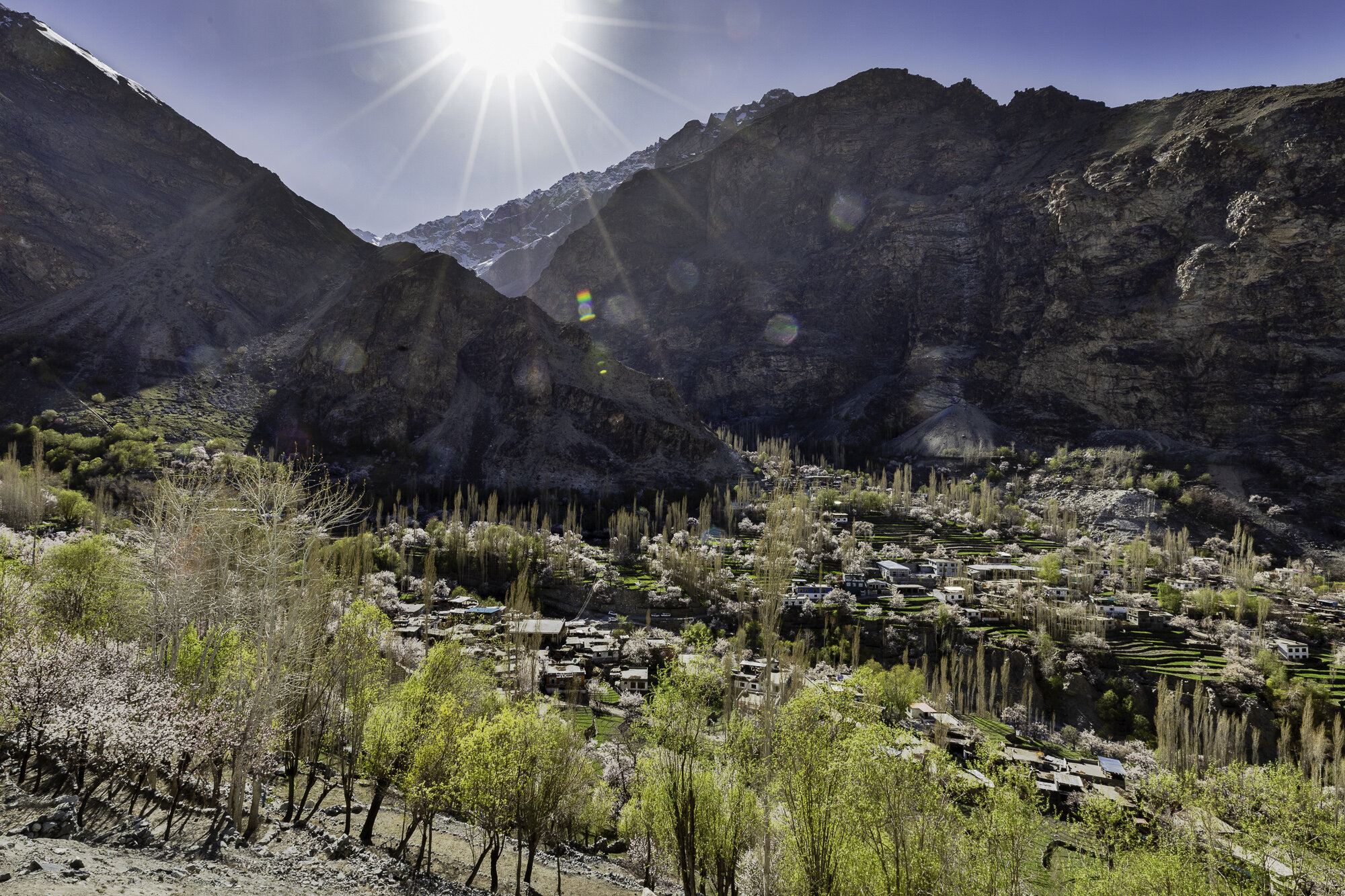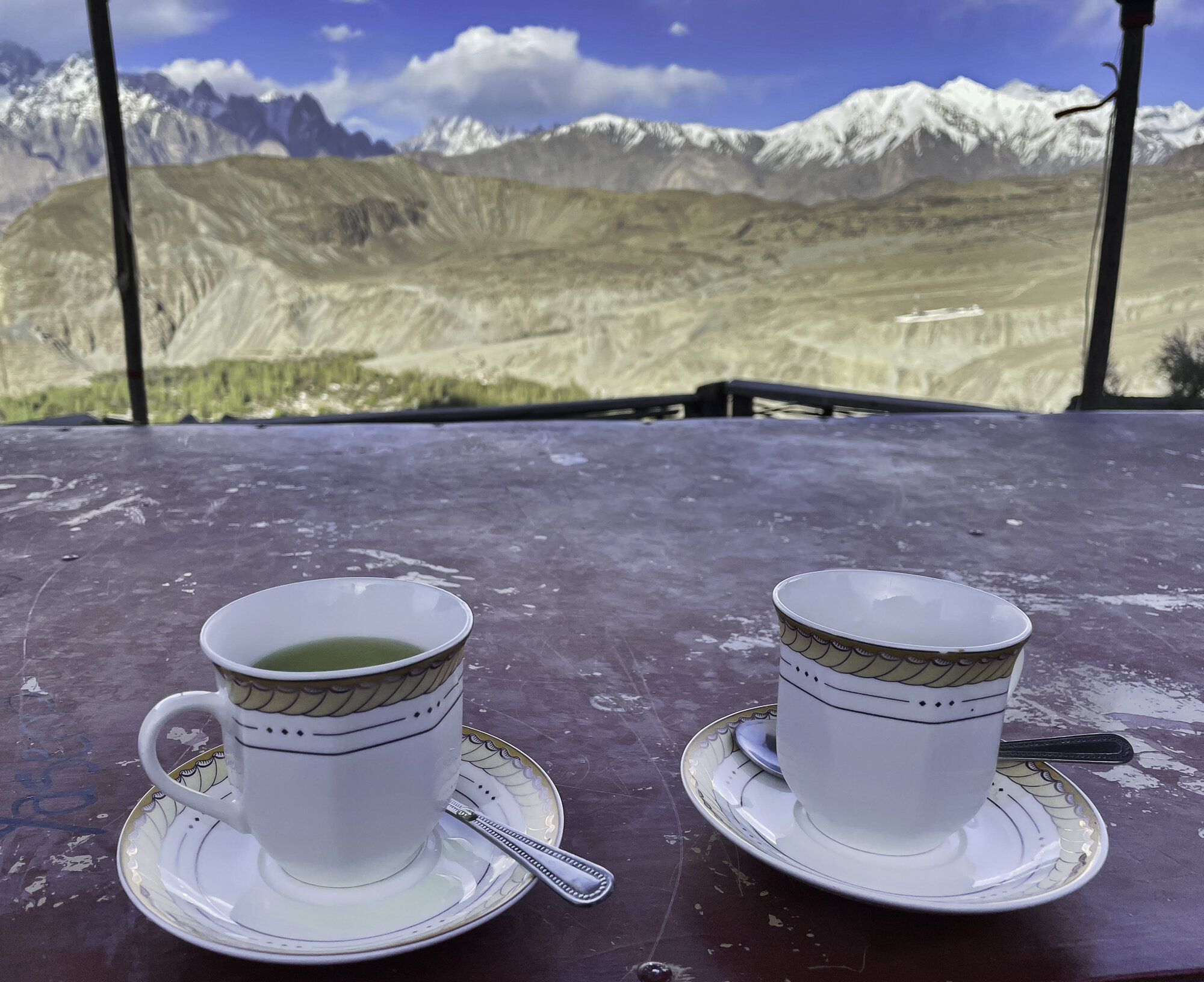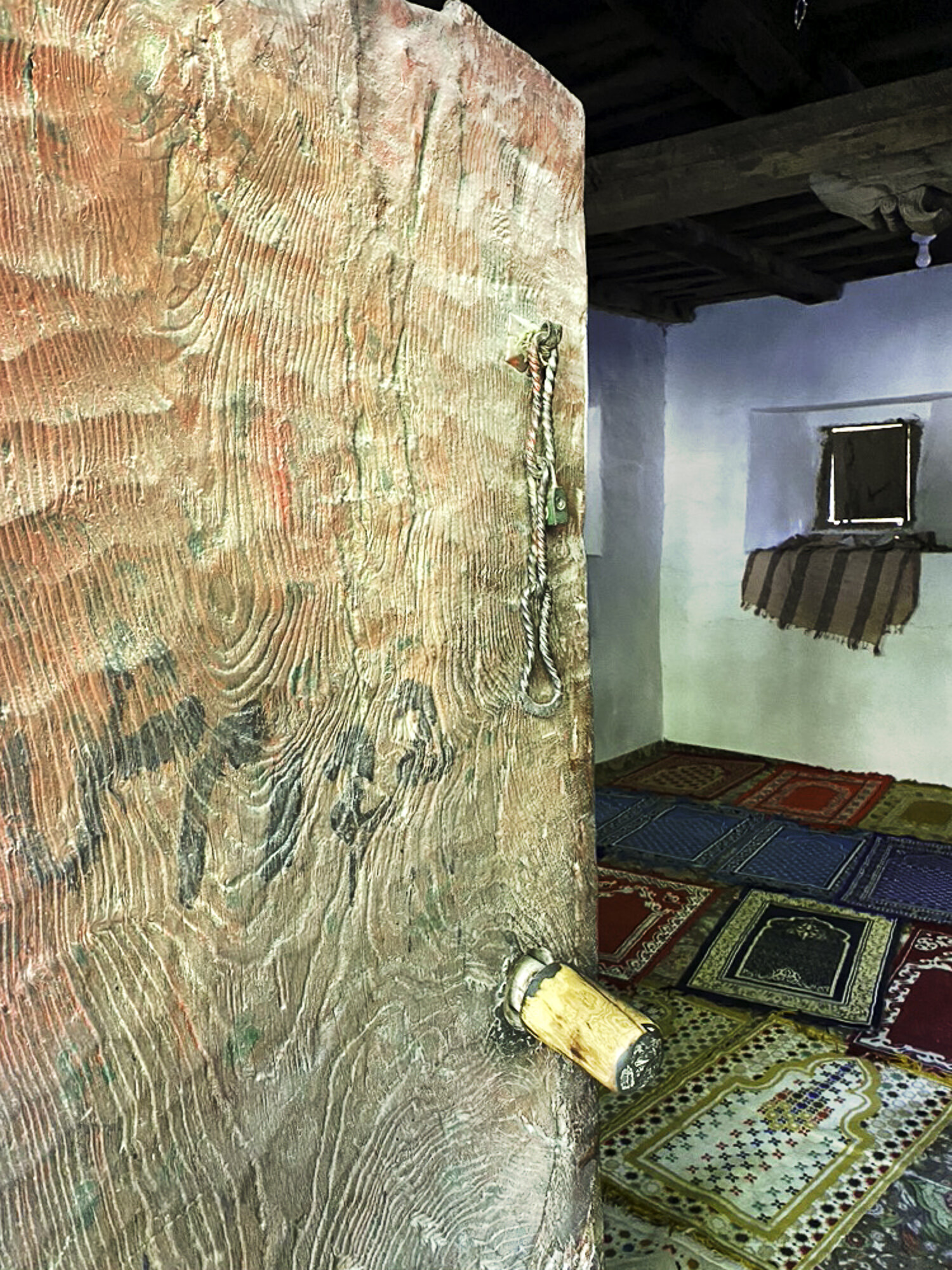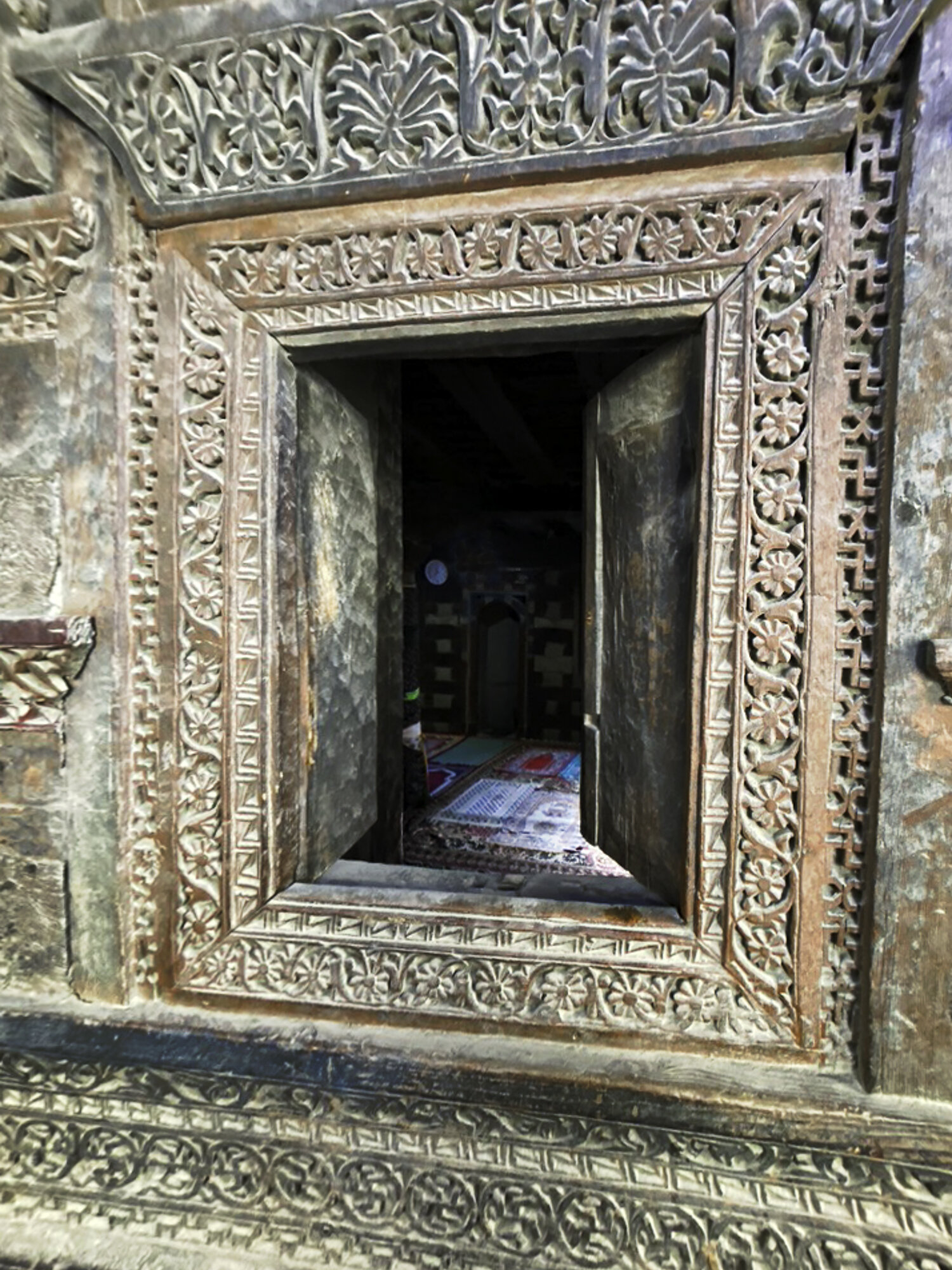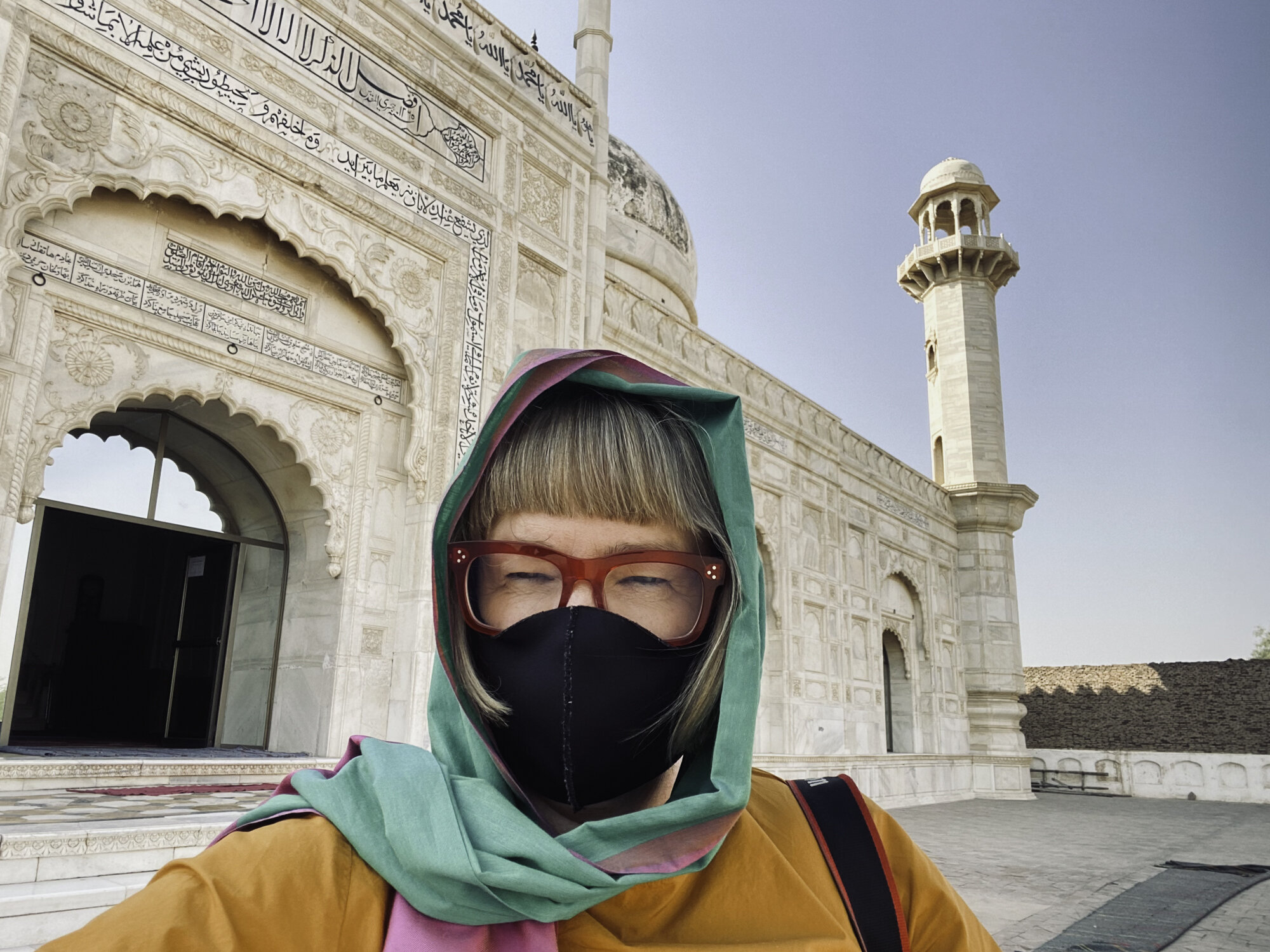Postcards from Pakistan
Postcard from Thoqsikhar Mosque - a steep climb for the best green tea
We are staying in Khaplu that is in the Ghanche district, the easternmost district of Gilgit-Baltistan. To the north is China, to the south is Kashmir. I love hearing these beautiful sounding place names, even before arriving it sounded like a magical, exotic place.
If you visit this area of Pakistan you must bring your hiking boots with you as the best views can only be seen on foot. So we pulled on our hiking boots and set out to visit Thoqsikhar Mosque that sits high above the Khaplu Valley.
It is difficult to find any information in English about this five hundred year old mosque that sits at over 2,700 meters, high above the Khaplu Valley. The mosque is also known as Thoksikhar, Thoqsi Khar, or Thoksi Ghar. We drove to Gharbuchang Village to start the walk. Our guide, Mehrab, told us that it was a gentle walk and should take around 45 minutes to reach the top. The walk through the village was gentle, as was the first five minutes around the fields. Children peeked out from behind gates and a little goat followed us until a cow looked like more fun to play with. However the next 40 minutes of the walk was steep. It was hard work walking at altitude. I kept stopping to take photographs but it also gave me an opportunity to catch my breath.
Up and up we climbed. The views of the village and the valley kept getting better and better. Close to the mosque we were met by two local men who offered us tea and a place to sit and rest. We decided to keep going and stop on the way back. We finally reached the mosque and were able to enter and walk around the outside terrace. Past the mosque there is a short walk to reach the lookout where you get spectacular views of the Khaplu Valley. We enjoyed the cooling breeze, took more photos and then turned around to head back down before the sun set. At a small terrace a local, green tea was ready and waiting for us. We sat and enjoyed the tea and the view – both were wonderful.
Thoqsikhar Mosque sitting high above the Khaplu Valley
Gharbuchang Village
Gharbuchang Village
Gharbuchang Village
Looking back across the valley at Gharbuchang Village
Getting closer to the mosque
Gharbuchang Village and Thoqsikhar Mosque
Mehrab places a stone to celebrate that we made it this far.
Stopping to catch my breath
Thoqsikhar Mosque
Thoqsikhar Mosque
Entry to the terrace that surrounds the mosque
Inside the mosque
The lookout
Khaplu Valley
Down in the valley below we can see Khaplu Fort
Excellent maker of green tea
The tea, the view.
Postcard from Shigar - one village, two historic mosques
Khilingrong Mosque
Before travelling to Shigar I had read about the Shigar Fort. What I hadn’t read about were the two historic mosques, Khilingrong and Amburiq.
As we walked around Khilingrong Mosque, built over 400 years ago, we admired the unusual design. It has two stories, the lower story used during winter and the upper story used in summer to take advantage of any breeze. While the verandah on both levels is made from intricately carved wood, the inside is made from the traditional method of building alternate levels of wood and stone. Instead of four minarets there is a central tower that is Tibetan in design. The mosque was in falling into disrepair when the Aga Khan Cultural Service of Pakistan (AKCSP) stepped in to renovate and save this mosque. The AKCSP helped train locals in traditional, and highly specialised restoration and it also meant the mosque could be used again by the community.
The second mosque we visited was the Amburiq Mosque, 800 years old. According to the sign outside the mosque it was built by Irani craftsmen travelling with a Persian Sufi saint, Mir Syed Ali Hamdani. Again, you can see Kashmiri, Tibetan and Persian designs in the building with another lovely Tibetan tower on the top. The mosque is another example of the award winning work of the AKCSP with funding from the Norwegian Government.
The Aga Khan Cultural Service of Pakistan should be commended for the restoration work they undertake, saving historical buildings in ways that benefit the community through skills training and preserving Pakistan’s rich and varied history.
Upper level, Khilingrong Mosque
Front facade, Khilingrong Mosque
Entry, Khilingrong Mosque
Front door, Khilingrong Mosque
Amburiq Mosque, front entry
Side view, Amburiq Mosque
Layer upon layer of restored woodwork, Amburiq Mosque
Front entryway, Amburiq Mosque
Front door, Amburiq Mosque
Inside Amburiq Mosque
Window detail, Amburiq Mosque
Inside Amburiq Mosque
Postcard from Abbasi Mosque, Cholistan Desert
From the top of one of the bastions of Derawar Fort you can see the Mosque’s three white domes shining through the afternoon haze. The Mosque was built in 1849 by Nawab Bahawal Khan Abbasi. Covered in white marble the mosque is symmetrical with minarets and decorative arches and Islamic calligraphy. The design was supposed to have been inspired by either the Shah Jahan’s Moti (Pearl) Mosque in Agra or the Moti Mosque at the Red Fort in Dehli.
We had time for a quick stop to see the mosque before continuing our journey. We took off our shoes and I covered my head. Inside the courtyard it was hot in the afternoon sun and very quiet. Time for a moment of quiet contemplation.
Postcard from Lahore - Wazer Khan Mosque
Australian Photographer in Pakistan
Instagram @gaynor.shaw.photography
A number of weeks ago, when you could still travel around Pakistan, we visited Lahore. This was my first visit to Lahore and I can see why visitors return again and again. Lahore was originally the capital of Pakistan and has a long and varied history. Hindu, Buddhist, Muslim, Mughal, Afghan, British, Pakistan - each new arrival leaving an interesting layer of culture, history, art and religion.
Lahore has a walled inner city and the Wazer Khan Mosque is near the Delhi Gate. The mosque was built in 1634-41 AD during the reign of Mughal Emperor Shah Jahan. The mosque courtyard floor has detailed brickwork. The walls and ceilings are covered in tile work known as ‘kashi-kari’ and detailed frescoes with calligraphy, flowers and geometric designs.
Outside noisy, daily live continued, food vendors called out to people walking by, the narrow streets busy with motorbikes, carts and rickshaws. However, inside the courtyard it was peaceful, a place to slow down, pray and contemplate life. As a photographer I loved the building’s details, small, richly coloured ceramic tiles, peeling paint revealing layers beneath, intricate designs of flowers. I also loved seeing how the space is used today. People came to pray, food was being prepared, washing was being done on the roof.
The mosque has been listed as a possible UNESCO World Heritage Site. Restoration work has been ongoing since 2009 to try and save this incredible piece of history that is still in use today and hopefully for many more years to come.
Postcard from Islamabad - Faisal Mosque
Australian Photographer in Pakistan
Instagram @gaynor.shaw.photography
Faisal Mosque, Islamabad
Inspired by the shape of a bedouin tent, at the foothills of the Margalla Hills, Faisal Mosque is a dramatic, contemporary piece of architecture. The mosque was designed by a Turkish architect, Vedat Dalokay. The surrounding four minarets are 79 metres tall. The mosque can accomodate 10,000 worshippers and is the largest mosque in Pakistan and the fourth largest mosque in the world. Unfortunately we couldn’t go inside the mosque but as we looked through the windows we could see the amazing interior with mosaics and calligraphy by Pakistani artist Sadequain.
The mosque is surrounded by a large courtyard and park, attracting many worshippers and visitors. When we visited the park and courtyard were full of people having picnics and meeting friends. As a sign of respect I covered my head and we left our shoes with an attendant at the front entrance. Many people wanted to know where we were from and why we were visiting. I’m so glad we visited, both to see the incredible architecture but we also met some wonderful people.











